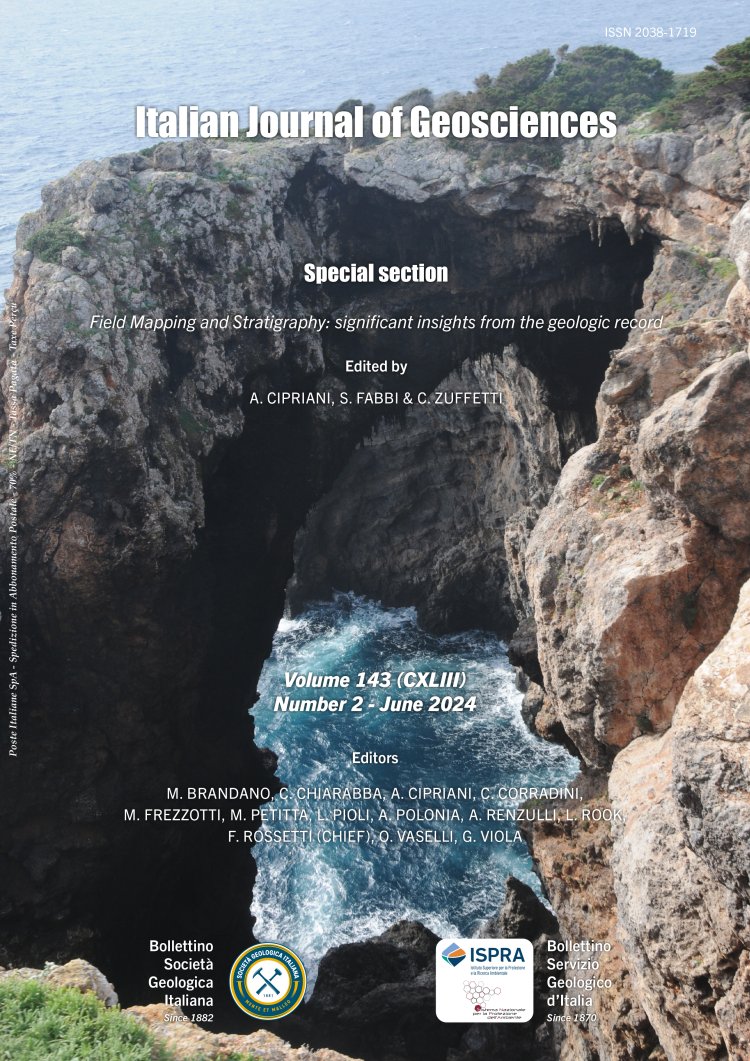
The Early-Middle Miocene marly-siliceous and siliciclastic sedimentation of the Tuscan Domain along the Mugello-Casentino-Arezzo alignment (Northern Apennines, Italy)
Piero Bruni1, Enrico Pandeli1,5, Mauro Papini1, Marisa Nocchi4, Angela Baldanza6, Giuseppe Aruta1, Lucina Luchetti2, Carlo Nini3, Francesco Miniati1,5 & Elia Pasqua1
1Department of Earth Sciences, University of Florence - Via G. La Pira, 4 - 50121 Florence (Italy).
2Environmental Protection Agency (ARTA) - Via Spezioli, 52 - 66100 Chieti (Italy).
3ENI S.p.A. - Div. Exploration and Production, Via Unione Europea 3 - 20097 S. Donato Milanese-Milan (Italy).
4Retired Professor of the past Department of Earth Sciences, University of Perugia - Piazza dell’ Università - 06123 Perugia (Italy).
5CNR (National Research Council of Italy) - Institute of Geosciences and Earth Resources, Section of Florence - Via G. La Pira, 4 - 50121 Florence (Italy).
6Department of Physics and Geology, University of Perugia - Via Pascoli snc, 06123 Perugia (Italy).
Corresponding author e-mail: enrico.pandeli@unifi.it
Abstract
Keywords
Get Full Text